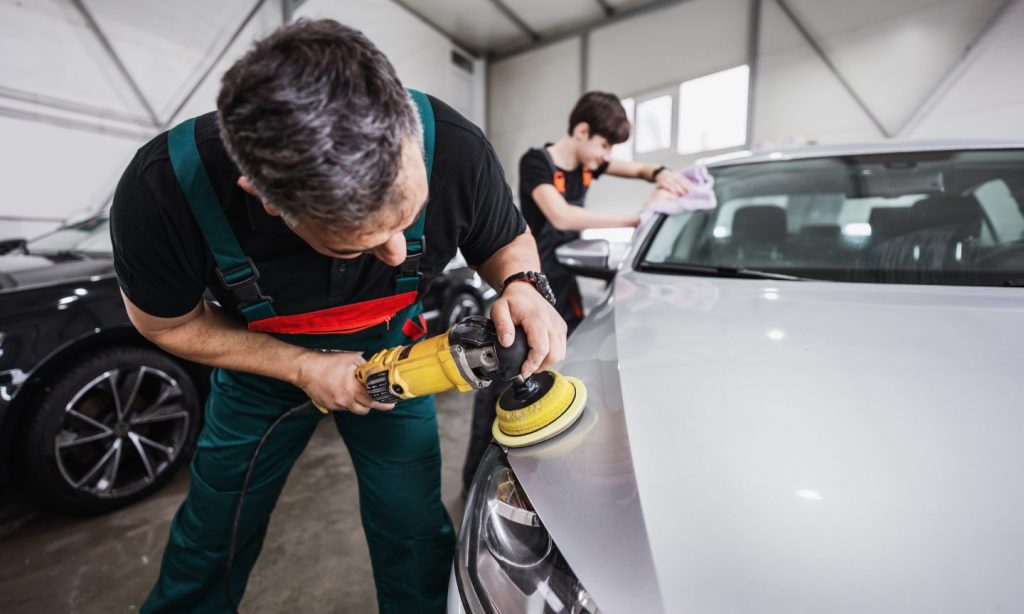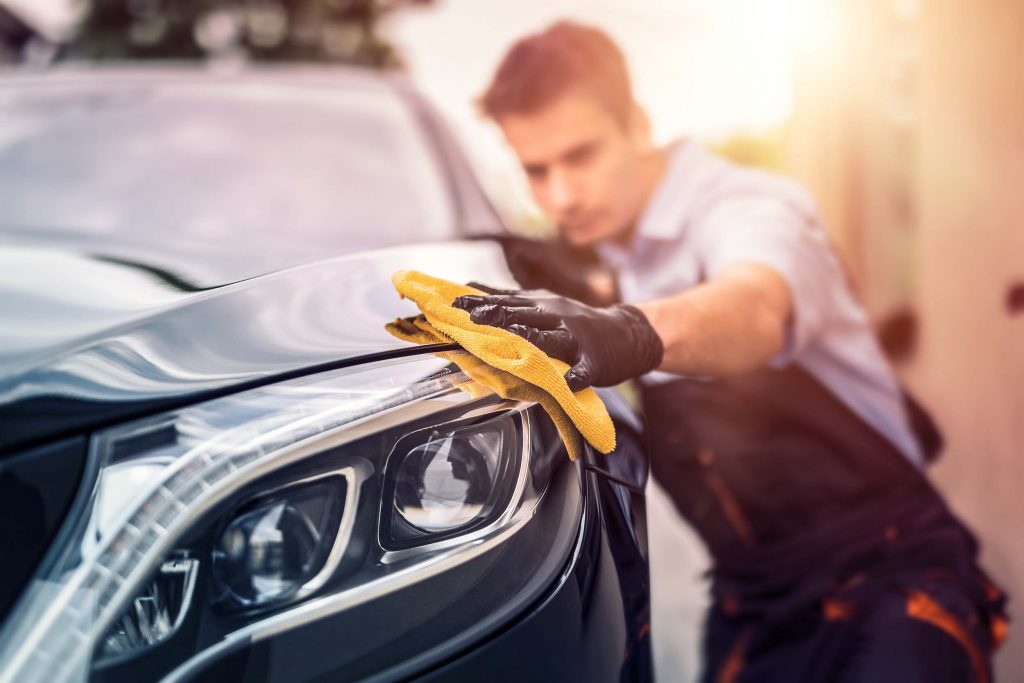
Wishing your car looked as good as new? Car detailing can help you achieve that, but you need to decide whether you want to do it yourself or hire a professional. Regular car detailing is highly beneficial in preventing your car from deteriorating. It helps maintain the resale value and even enhances safety. For instance, clean windows and headlights improve visibility.If you’re contemplating between doing it yourself or hiring professionals, weigh the pros and cons. This will help you decide, considering that DIY car detailing can be more cost-effective.
Car detailing involves the comprehensive restoration of a vehicle to achieve a condition that matches or surpasses its original state. It goes beyond mere surface cleaning, encompassing meticulous treatment for scratches, chips, cracks, signs of aging, wear, and thorough cleansing of dirt, dust, and grime from both the exterior and interior.Notably, car detailing is a manual process, distinct from automated car washes. The ultimate outcome is a flawless vehicle that appears as if it has just been freshly manufactured. For visual insights into the transformative effects of car detailing, one can refer to before and after car detailing photos.
Exterior detailing primarily focuses on enhancing and safeguarding the vehicle’s paint. This involves the elimination of scratches, correction of swirls and chips, and the repair of rust and oxidation. The process of exterior detailing includes the following steps after a thorough exterior wash and rinse:
- Paint Claying: Utilizing a clay bar to remove residue and contaminants from the paint.
- Polishing: Removing layers of clear coat to eliminate scratches and swirls.
- Waxing: Applying a wax coating to achieve a glossy finish and an additional layer of protection. An upgrade to ceramic coating or PPF (paint protection film) can provide enhanced defense against elements such as UV rays, acid rain, rocks, insects, and bird droppings.
Additionally, one can opt for paint correction to address significant imperfections like oxidation and stains. Genuine paint correction involves the use of machinery or sandpaper, potentially extending the detailing process beyond the typical duration of two to four hours for a car’s exterior.
Interior detailing encompasses a range of tasks aimed at revitalizing the interior of a vehicle. This involves the following key steps:
- Vacuuming: Thorough vacuuming is performed both at the outset and conclusion of the detailing process. An air compressor might be utilized to access the smallest and most hard-to-reach crevices.
- Shampooing and Steam Cleaning: The upholstery, carpet, and floor mats are cleaned using shampooing and/or steam-cleaning techniques.
- Leather Care: Cleaning and conditioning treatments are applied to leather surfaces.
- Interior Glass Cleaning: Comprehensive cleaning of interior glass surfaces is carried out to achieve a clear and streak-free finish.
- Wipe-Down: Surfaces within the interior are meticulously wiped down to eliminate dirt and dust.
- Air Freshening: The interior is treated with air fresheners to enhance the overall ambiance.
These steps ensure a thorough cleaning and rejuvenation of the vehicle’s interior, enhancing the comfort and aesthetics of the space.

The average cost of car detailing is approximately $160, as indicated by a 2020 study conducted by Mobile Tech RX. This cost can vary depending on the size and condition of the vehicle, with SUVs and vans typically incurring an additional charge of approximately $50. Professional car detailing services often provide a range of service packages, with prices varying from $20 to $200 or even higher, based on the extent and complexity of the services rendered.
Professionals save you time. A standard professional car detailing session for a well-maintained car usually spans between two to four hours. If you were to undertake the same detailing process yourself, it could easily take at least twice as long. Moreover, if you prefer not to leave your car at the detailing shop, certain companies offer the convenience of mobile car detailing, where they come to your home to perform the service.Professionals also help you save money, especially when it comes to advanced services requiring specialized detailing tools, such as paint correction and engine detailing. These specialized services can be more costly and challenging to perform without professional expertise and the right equipment.
DIY car detailing can be tailored to fit your budget, as the cost varies based on the cleaning compounds and tools you choose, such as car buffers and upholstery steamers, which offer a wide array of options.For instance, car buffers come in a broad price range, from more affordable options to higher-end ones. Upholstery steamers, a key tool for interior cleaning, typically start at around $100 (for instance, this Bissell bestseller is priced at $120). In terms of interior cleaning compounds, cleaners, and cloths, investing in a comprehensive car detailing kit is a practical starting point, such as the kit offered by Meguiar’s.The advantage of investing in these tools and cleaning products is that they can be utilized for multiple cleaning sessions, ultimately saving you money. However, it’s essential to weigh this against the value of your time when deciding how much you’re willing to invest.
DIY car detailing can lead to cost savings provided you’re willing to make an initial investment in the necessary supplies.Additionally, DIY car detailing offers you the flexibility to focus on the most heavily soiled areas of your vehicle. You have the option to conduct a thorough or partial detailing, addressing specific stains and scratches as they occur.
